The content of the article
How to grow a hyacinth at home? Carping at the words - no way. This flower, like most bulbous, has a distinct dependence on the changing seasons. That is, he will not be constantly growing on the windowsill in the pot.
But to do it forcing is worth a try. Especially effectively and originally the hyacinth will look as a gift for any holiday. Especially since he does not need extraordinary care. Now consider all the steps.
Selection and preparation of bulbs
For growing at home, choose a large onion with a diameter of more than 4 cm. A smaller one will give foliage, but you will not wait for flowering. Be sure to planting material must meet the following conditions:
- To the touch firm, pleasantly elastic. Softness speaks of damage.
- Without visible damage, cuts, dark weeping spots.
- Lack of a mold and its smell.
- Scales whole, dry. Characteristic for the sort of color.
- The bottom is clean, smooth, dense, free from damage and dents.
You can choose a bulb in your flowerbed or buy it in a store on the market. Some even manage to order via the Internet. Risky occupation. Who knows what will come in the mail?
After the hyacinth has been selected, you need to properly prepare it. To do this, the bulb is soaked for 17-19 minutes in a strong hot solution of potassium permanganate. Approximately + 40 ° С. Then, without rinsing, they dip into the phytosporin solution. Cooking instructions can always be found on the packaging.
Dried. And stored for storage in a dark warm place of medium humidity. Such treatment will kill fungal spores and pathogenic bacteria.
When to plant a hyacinth
To podgadat beginning of flowering to a specific date, it is necessary to recall the mathematics. Take the right number. Subtract 24 days. This is the time to build up green mass and bud maturation. And we subtract 10 weeks for the cold period of rooting.
For example, we need a blooming hyacinth by January 7th.We do the necessary calculations. It turns out that you need to plant an onion in the ground about October 3-5.
Selection of soil and pot
The soil. The soil should be nutritious, rich in rotted organic matter. It is recommended to make a mixture of their own. For this you will need:
- good humus, 1
- peat, 1
- coarse pure sand 2
- turf, 1
- mature compost, 0.5
The numbers indicate the number of parts in the soil mixture. All this is well mixed. Then heated in an oven at a temperature of + 105-110 ° C. This will disinfect the primer. Cool, ready.
Plant a hyacinth
In order to grow a hyacinth at home, you need to plant it properly. How many pieces to plant in one pot? It depends on how big it is. Maybe your pots will be enough for 7 or 9 bulbs.But the most effective look single planting, or three hyacinths of different colors in one container. For this, there must be holes on the bottom of the pot to drain excess liquid. They are powdered with a thick layer of drainage. For example, expanded clay or small gravel. Then add a little clean sand on top.
After that pour the soil, set the onion. And fall asleep on the very shoulders. Not with a head! Above the surface should remain the top of the bulb. At least 2.5-2.7 cm. Further, the hyacinth should be watered until the soil is completely wet.
Now comes the most crucial period.
Rooting bulbs
Under natural conditions, hyacinths fully develop a healthy root system in about 9-10 weeks. It happens in the fall. In winter, the bulbs go completely ready to bloom. We'll make them fall too.
For this, pots of hyacinths are placed in a cool room with high humidity. The temperature should be about + 4-6 ° С. This may be a cellar, a cellar, an unheated loggia. But it is strictly obligatory total darkness! That is, the pots must be covered. Dense fabric, cardboard box, wooden box.
CouncilBefore the shelter look at the lumen, suddenly a ray penetrates somewhere?
Some recommend storing plantings in the fridge. It's dark, cold, but dry. Therefore, the container must be covered with foil. It is advisable to leave a few small holes for ventilation and evaporation of condensate.
And further. During all 10 weeks of the cold period, be sure to periodically check the containers. If necessary - water with cool settled water. Or boiled. It is important to prevent the earthen clod from drying out. But you can not fill too. A little moisturize - perfect. Naturally, airing is also necessary.
Distillation stage
23-24 days before the proposed flowering capacity to pull out into the light. But not immediately under direct rays. The temperature is also raised gradually. Otherwise, the bulbs face thermal shock. Remember, in the spring, too, not everything comes at once. And we miss the winter and just arrange artificial spring days for hyacinths.
Approximate procedure:
- 1 day. They pulled out of a cool place, put it on the floor near the entrance or balcony door. If necessary, watered.
- 2 day.Fed with complex mineral fertilizer with a high content of potassium and phosphorus. Nitrogen is desirable to eliminate at all, it suffices in good organic soil.
- 5 day. Transferred capacity with hyacinth in the depths of the room. Put on a chair, table, bedside table. That is, a little added light and temperature.
- 10 day. Once again fed. And you can put on a permanent place of deployment.
This must occur away from heating devices and direct sunlight. There are only three options:
- On the table next to the window, the radiators are covered with a thick towel or blanket.
- On the windowsill. Batteries are closed, hyacinth is shaded from the sun by white paper or a curtain.
- In the depths of the room on a stand. Additional lighting fitolampi.
If all conditions are met, then after about 21-24 days the hyacinth will delight with a thick peduncle with a brush of beautiful flowers.
Care during flowering
Hyacinth is not a Decembrist. It can be easily rearranged during flowering or transported to donate. At home, the plant blooms about 19-21 days. To longer enjoy the magical scent of thisharbinger of spring, you need to properly care for him.
Water only boiled or melt water at room temperature. Excess fluid from the pan must be drained. Lighting should be at least 12 hours a day. Once in 13 days mineral water is recommended. Organic fertilizer reduces flowering time.
The soil is not loosened, but you can put moss or peat on top to avoid the appearance of the upper crust. Or powder large clean sand. This will be a kind of prevention of mold. Airing regularly, but without drafts.
Content after flowering
Suppose that you raised a hyacinth at home not for a gift, but for your joy. Everything turned out, the plant has safely faded its allotted time. What to do with the bulb now? Throw out? Come on! Of course, for the new forcing it is no longer suitable, simply the strength is not enough. But for planting in the garden or in the flowerbed is still quite go. For the year she will rest, gain strength, enter into her usual vegetative cycle. And then another 5 years will be every spring to give you a bunch.
At the same time, she also gives birth to babies. They can be grown up and also expelled in the winter or seated outside.But all this is possible only with proper care after flowering.
The first thing to do is to cut the peduncle. He will pull the juice from the bulb for a long time while it dries. We need it to get stronger and full. Also for help we do not change the mode. That is, the temperature and lighting remain the same.
Until the last leaf has dried, we continue to regularly water the hyacinth as needed. Naturally, fertilizer also can not be forgotten. All this will allow the bulb to gain enough nutrients and to sustain the recovery period without loss.
Growing a hyacinth without land
Agrotechnics practically does not differ from a ground planting. Only the bulb should barely touch the water's mirror, and not swim in it. Everything else, as described above: cold 10 weeks for rooting, then germination and flowering.
The only difference is the need for hyacinth in the diet. It is necessary to add mineral fertilizers to water. Regularly, but without fanaticism. Otherwise, it will be difficult to gain strength and show lush flowering on a single clean water bulb.
Council If you have already decided on such an experiment, then use a transparent vessel. So it will be easier to control the level of fluid and the state of the roots.In addition, this design looks very original.
Some tips
- When watering, make sure that water does not fall on the plant at all. In any period. It is best to water from a watering can with a thin nose or a large syringe. And strictly on the edge of the pot. Naturally, any spraying excluded.
- Do not use rainwater for irrigation. Where is the guarantee that it is an environmentally friendly liquid without half a periodic table?
- Every three days during artificial spring, turn the pot around its axis by about 40-43 °. This will cause the plant to release the leaves evenly. And the peduncle will be full. If this is neglected, the brush will turn one-sided.
- Missed and the flower grew in one direction? Worse, bend down? No problem. Props from scrap materials have not been canceled. Bend the thick wire with the letter "p" and put it in the pot. Just do not tie the peduncle, it can damage it even more, blocking the access of nutrients. Instead of a wire, you can take a small knot of a suitable shape.
- Carefully see that there are no undigested parts of plants or manure left in the ground for planting.During rooting, they will give heat to the bulb. And we need a low temperature. Hyacinth simply confuses autumn with spring. And can release the leaves ahead of time. With an underdeveloped root system, this is fraught with deformed peduncles or no flowers at all.
How to grow a hyacinth at home? Usually. This occupation is even for those who are not engaged in the cultivation of indoor plants. A little tricks, a bit of attention, care and love - that's all you need to admire the flowers in the middle of winter. And what a scent! He swims around the rooms! This result is worth the small work and your time spent.
Video: how to grow hyacinth at home


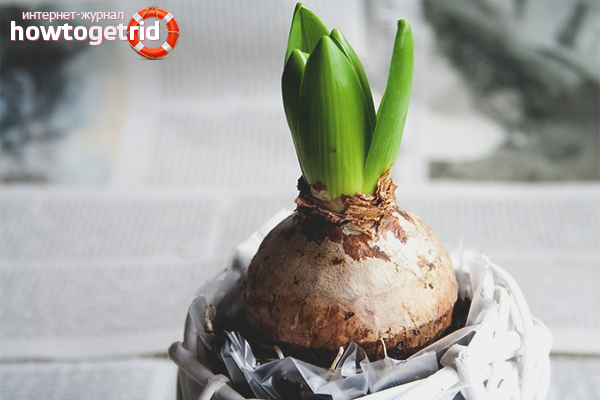



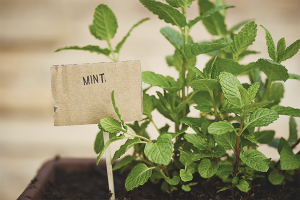
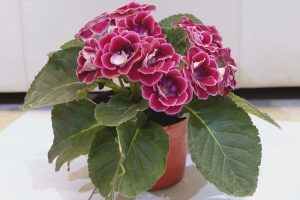
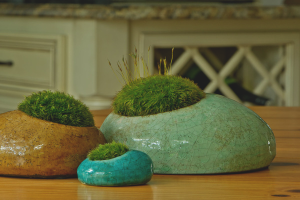
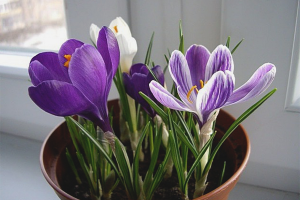
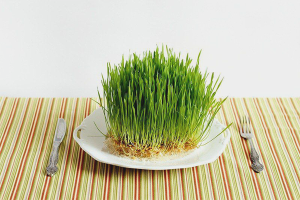
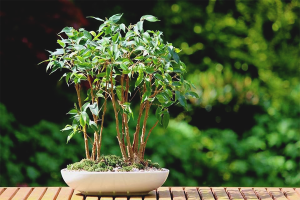
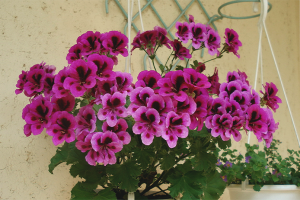
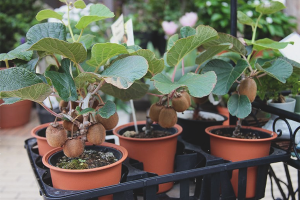
To send